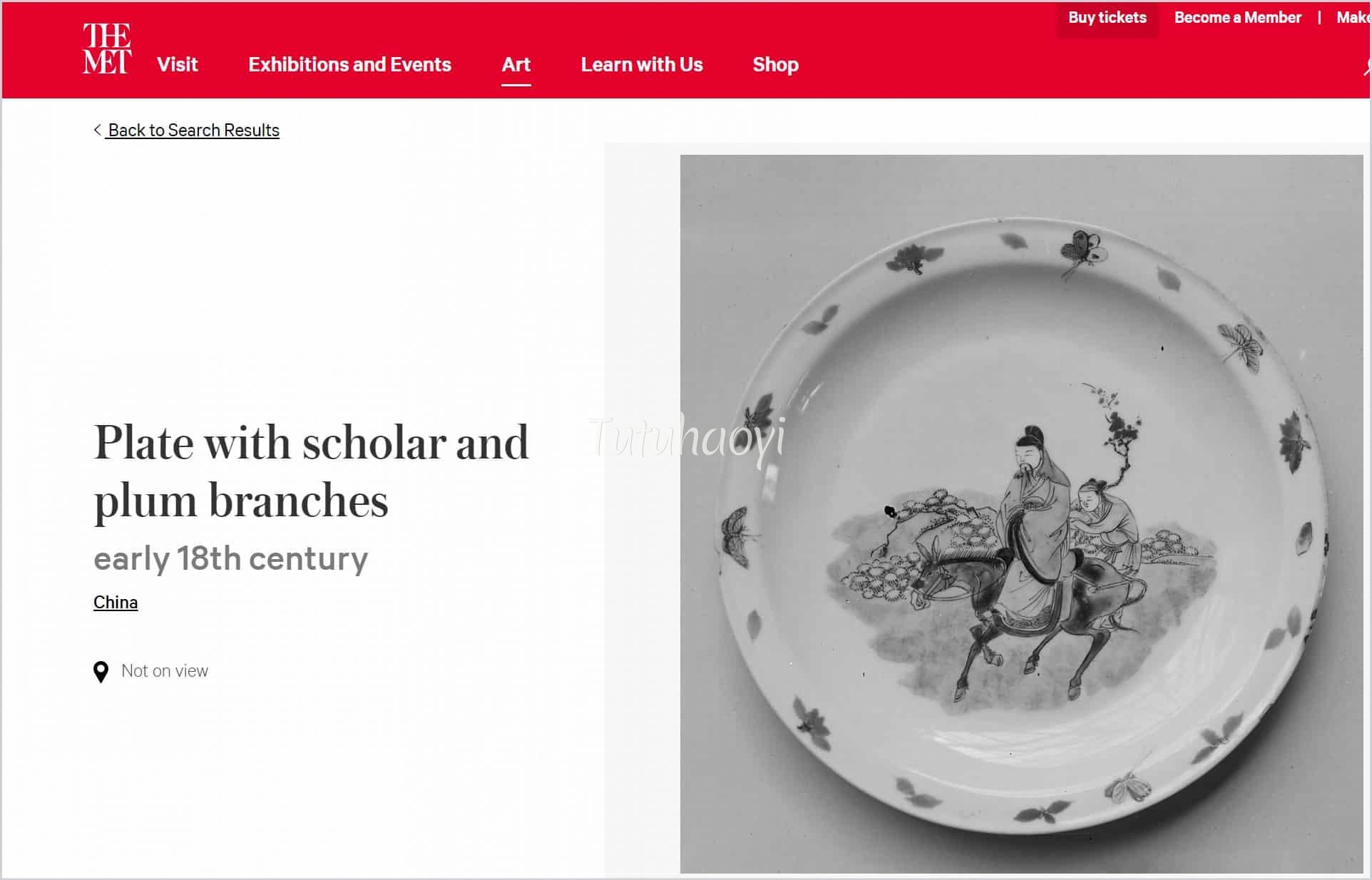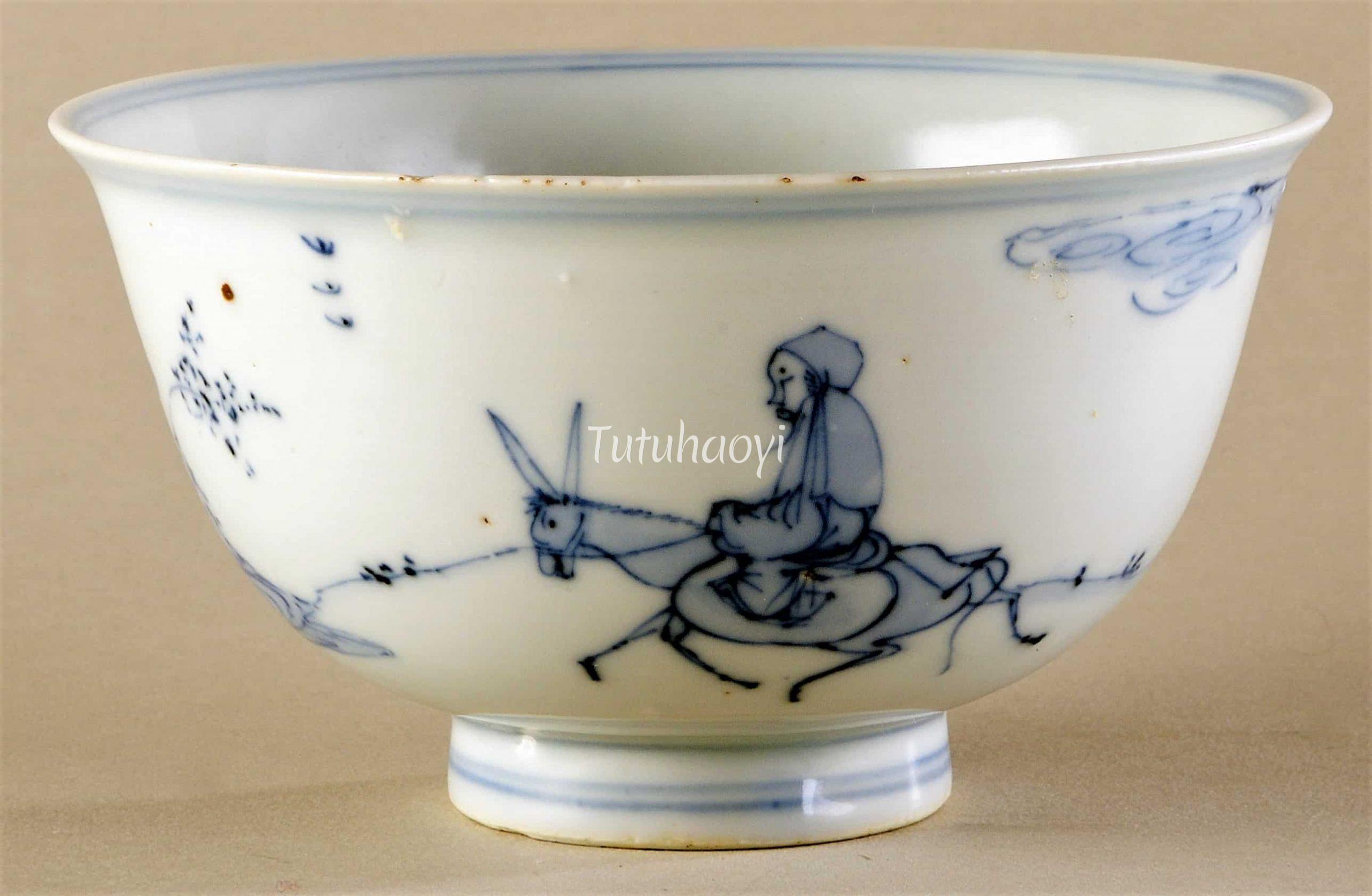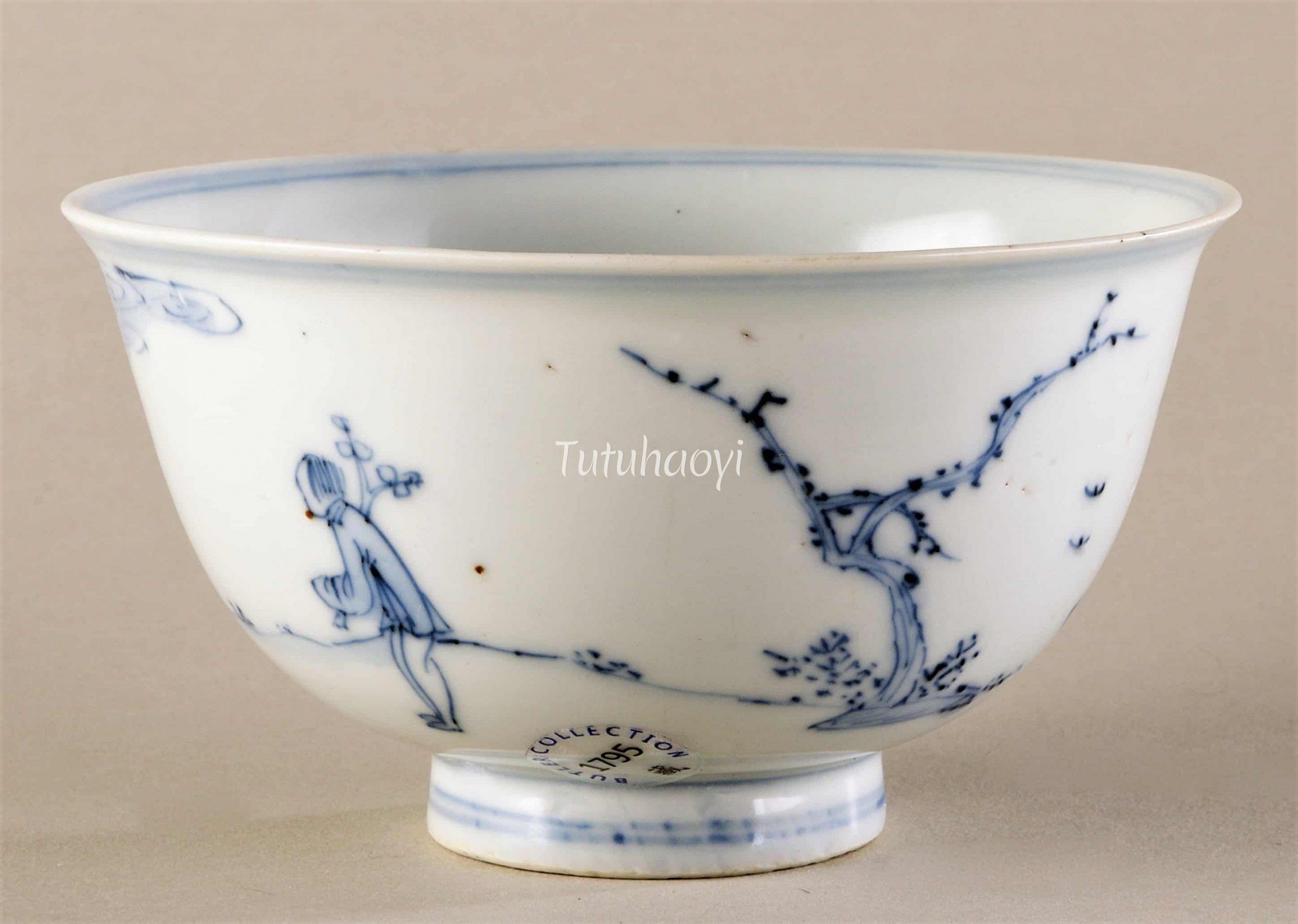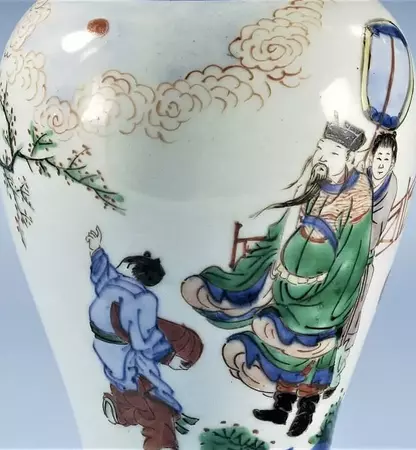Editor: A literati theme with the image of a scholar riding in a snowscape with branches of plum blossoms in the vicinity has been very popular in traditional Chinese visual culture and literature. However, there are different descriptions of this range of art works by museum and collection catalogues and research articles. Art historian Dr Yibin Ni hereby unveils the mystery for us.
featured image above: porcelain dish (detail) from the Hatcher Cargo, c. 1643, courtesy of Princessehof Museum, Leeuwarden, Netherlands
Professor Christiaan J. A. Jörg published a blue-and-white dish from the Hatcher Cargo, dated c. 1643, and described the scene painted on it ‘a snow landscape’ (“The Inter-Asiatic Dutch Porcelain Trade”, Oriental Art, No. 1, 1999, fig. 7, p. 74).

A Kangxi dish with enamelled decoration with a similar scene is described literally: ‘a scholar riding through snow on a mule, followed by an attendant on foot carrying a flowering prunus branch’ (Regina Krahl, Chinese ceramics from the Meiyintang collection, London: Azimuth Editions, 1994, Vol. II, cat. 773, p. 144).


The Meiyintang dish has a twin sister in the Metropolitan Museum of Art, New York. When it is published in The World’s Great Collections: Oriental Ceramics – the Metropolitan Museum of Art, New York, Tokyo: Kondansha International Ltd. 1982, Vol. 11, Plate 133, there is no explanation for the scene in the well. At the moment, the MET online catalogue gives a description of ‘plate with scholar and plum branches’.


The image of a scholar riding in a snowscape with branches of plum blossom in the vicinity has been a literati theme, both literary and pictorial, popular in traditional China for a long time. Around the Yuan dynasty (1271–1368), the person on the donkey or horse, or even on foot, in this conventional motif became largely associated with Meng Haoran (孟浩然, c. 690–740), one of the most renowned poets of the Tang dynasty (618–906). In Act 2 of the play entitled ‘Su Zizhan Exiled to Huangzhou in Stormy Winter (苏子瞻风雪贬黄州)’ by Fei Tangchen (费唐臣, Yuan-dynasty playwright), there is a literal mention of ‘Meng Haoran who looked for plum blossom in a snowy day (踏雪寻梅孟浩然)’. A woodcut illustration in a book published during the Tianqi period (1621–27) in Ming dynasty with the same scene and a caption above the picture containing the name of ‘Haoran (浩然)’ clearly shows the canonisation of this attribution.

Meng Haoran started off pursuing a civil service career and then abandoned it to concentrate on poetry. He was a major influence on other Tang and later poets because of his innovative focus on nature. There is a play attributed to the noted Yuan dynasty playwright and poet, Ma Zhiyuan (马致远, c.1250 – c.1324), entitled ‘(Meng Haoran) Looking for Plum Blossom on a Snowy Day’. In the play, Meng Haoran was characterised as a scholar with incredible integrity, symbolised by his love of plum blossom looking its best during the depths of winter. Zhu Youdun (朱有燉, 1379–1439), a grandson of the founding emperor of the Ming dynasty Zhu Yuanzhang (朱元璋, r. 1368–98), wrote a play called ‘A New Edition of Meng Haoran Looking for Plum Blossom on a Snowy Day (新编孟浩然踏雪寻梅)’. Yu Qian (于谦,1398–1457), a Ming-dynasty Chinese official famous for his integrity has a poem on a painting entitled ‘Meng Haoran Looking for Plum Blossom on a Snowy Day (题孟浩然踏雪寻梅)’ in his prose and poetry collection Yu Zhong Su Ji 《于忠肃集》. When commenting on this traditional popular theme, the influential Ming critic Qi Biaojia (祁彪佳, 1602–1645) eulogised Meng, lauding his life-long self-exile from material pursuits in officialdom and holding up his deeds as good examples for scholars. That is the reason why this theme was very popular with Chinese literati for hundreds of years.


Literature:
Jeffrey P. Stamen and Cynthia Volk with Yibin Ni (2017), A Culture Revealed: Kangxi-Era Chinese Porcelain from the Jie Rui Tang Collection 文采卓然:潔蕊堂藏康熙盛世瓷, Jieruitang Publishing, Bruges, pp. 34-35.







